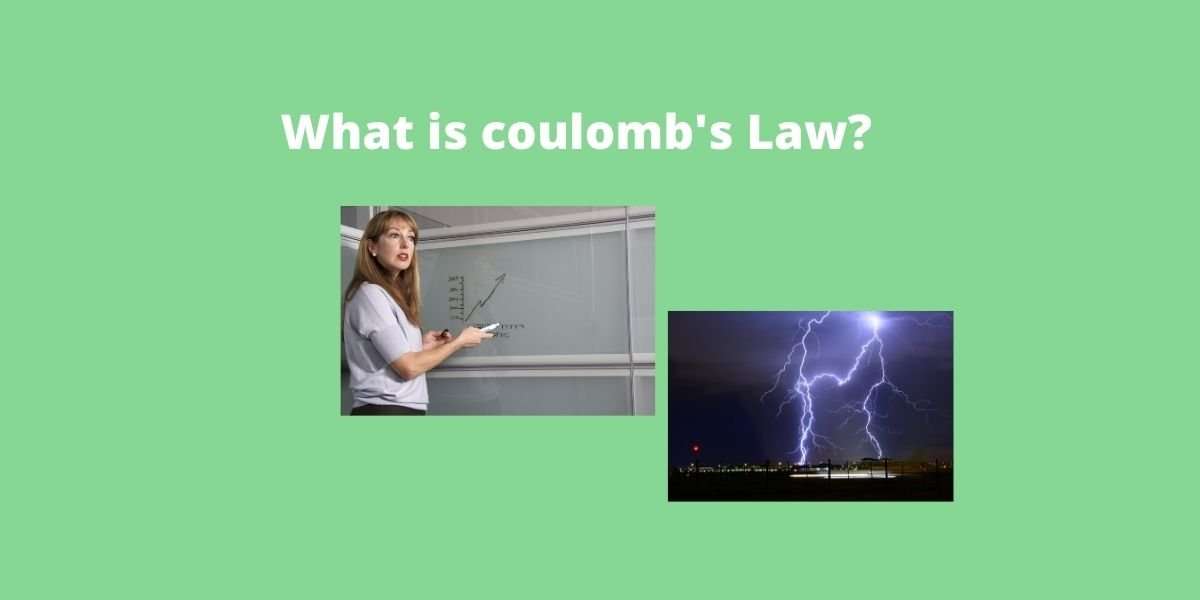What is Coulomb’s Law: Like charges of electricity repel, whereas unlike charges attract each other. The force of attraction or repulsion between two charges is directly proportional to the product of the magnitude of charges and inversely proportional to the square of the distance between them.

Let two point charges q1 and q2 be separated between them (r).
F = (q1q2)/r2
F = K(q1q2)/r2
“K” is called electrostatic constant, it depends on the medium.
The value of ‘K’ in a vacuum medium,
K = 9 x 109 Nm2/C2
The formula of K in a vacuum,
K = 1/4πεo
Where εo is known as the permittivity of free space or vacuum.
εo = 8.854 x 10-12 C2/Nm2
The formula of ‘K’ other than the vacuum,
K = 1/4πε
Where,’ ε is known as the permittivity of the medium.
F = 1/4πεo x (q1q2)/r2
The second law of electrostatics
The second law of electrostatics, also known as Coulomb’s law, states the force exerted between two point charges is:
- Directly proportional to the multiplication of the magnitude of both charges.
- Inversely proportional to the square to the square of the distance between them, and
- Inversely proportional to the absolute permittivity of the medium of the surrounding.
F = Kq1q2/r2
Where q1 represents the quantity of charge on object 1, q2 represents the quantity of charge on object 2, and ‘r’ represents the distance of separation between the two objects. The symbol ‘k’ is called the proportionality constant also known as Coulomb’s law constant.
Electrical v/s gravitational force
Both are the two non-contact forces with the relation
F = Kq1q2/r2
F = Gm1m2/r2
K = 9 x 109 Nm2/C2
G = 6.67 x 10-11 Nm2/kg2
These two above equations have very similar forms as they show an inverse square relationship between force and separation distance. Both equations show that the force is proportional to the product of the quantity that causes the force – change in the case of gravitational force. So far, there are some striking differences between the above two forces.
- Firstly, the proportionality constant (K) versus G – reveals that Coulomb’s law constant (k) is significantly greater than Newton’s universal gravitational constant (G). Hereafter a unit of charge will attract a unit of charge with significantly more force than a unit of mass will attract another unit of mass.
- Secondly, gravitational forces are only attractive, electric forces can be either attractive or repulsive.
Limitation of Coulomb’s Law
- It is valid only for fixed point charges.
- A point charge is the charge of the body whose size is much less than the other distance or separation between the two charges.
- It can be applied to uniformly charged spherical bodies if separations between the bodies are much greater than the radius of the sphere.
- It is not valid for distances smaller than 10-15m.
Some Important Facts about Coulomb’s Force
- Coulomb’s force is attractive as well as repulsive.
- Coulomb’s force is much stronger than the gravitational force.
- It is a conservative force.
- It is an electromagnetic force.
- Coulomb’s force is a central force; it acts along the line joining the two centers of bodies.
Relative Permittivity (εr)
Relative permittivity is defined as the ratio of electric force between two point charges when they are placed in a vacuum and when they are placed in a given medium.
εr = F12(vacuum)/F12(medium)
= [1/4πεo x (q1q2)/r2] ÷ [1/4πεo x (q1q2)/r2]
εr = ε/εo
where ε is the permittivity of the medium
and εo = permittivity of vacuum
I hope you like this article ” What is Coulomb’s Law?”. Comment below for other important topics.

Very helpful article about coulomb,s law
Thank for sharing this article